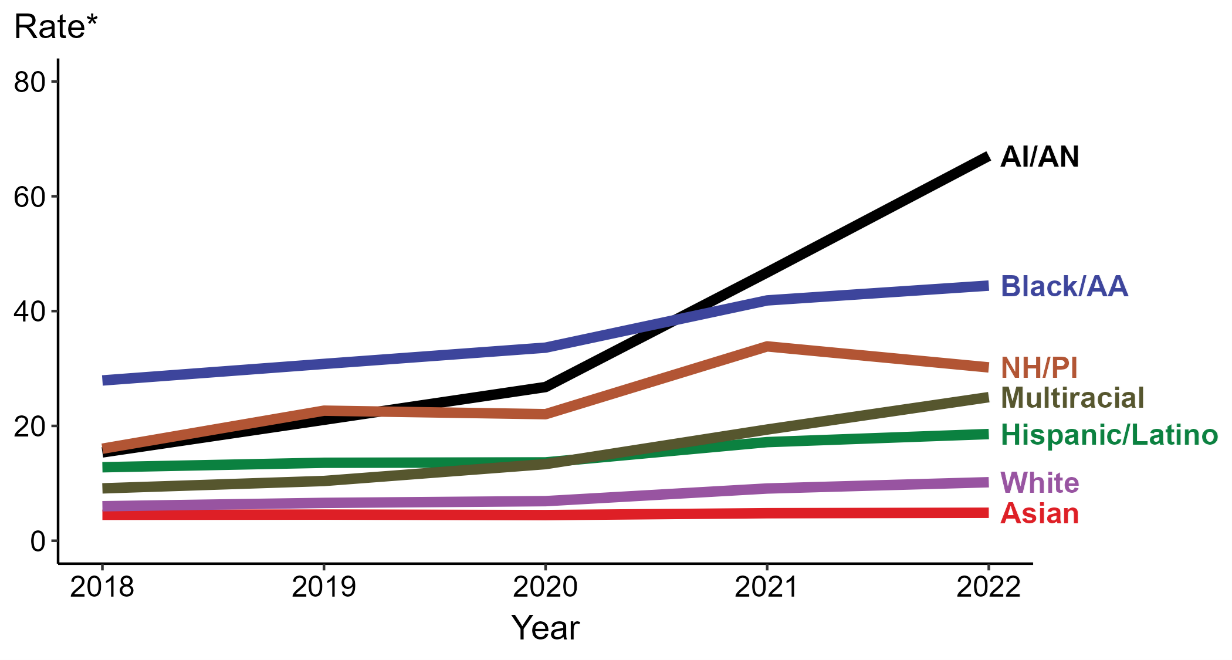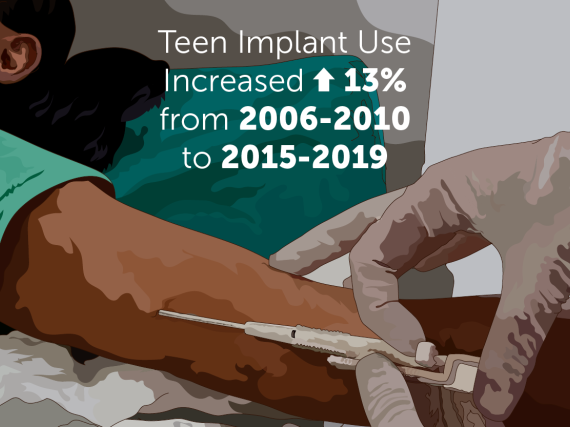US Syphilis Cases At Their Highest Since 1950
In mid-January of this year the CDC released its most recent data on STI rates in the United States. The findings, from 2022, show that there were over 2.5 million total cases of syphilis, gonorrhea, and chlamydia across the country.
| Cases | per | Year | |||
|---|---|---|---|---|---|
| Disease | 2018 | 2019 | 2020 | 2021 | 2022 |
| Chlamydia | 1,758,668 | 1,808,703 | 1,579,885 | 1,644,416 | 1,649,716 |
| Gonorrhea | 583,405 | 616,392 | 677,769 | 710,151 | 648,056 |
| Syphilis (all stages and congenital) | 115,064 | 129,825 | 133,959 | 176,733 | 207,255 |
| Total Reported STIs | 2,457,137 | 2,554,920 | 2,391,613 | 2,531,300 | 2,505,027 |
Most concerningly, syphilis cases (which includes primary, secondary, and congenital syphilis) have increased 80% since 2018. Cases of primary and secondary syphilis—the most infectious stages of the disease—have gone up 10% just in 2022 and 68% in the last five years. Rates of syphilis increased among men and women, across all ages, and in all parts of the United States. Of the total 203,500 cases (excluding congenital cases), around 59,000 involved the most infectious forms of the STI. Yet, as in previous years, the spread is not shared equally. For the second year, people who identify as American Indian/Alaskan Natives had the highest number of syphilis cases, at a rate of 67 per 100,000 people.

Despite the sharp increase in syphilis rates, the CDC’s report also contained two pieces of promising news. First, the number of cases of chlamydia was 1,649,716, about the same as last year and a notable decrease from 2019’s high of more than 1.8 million. However, between 2021 and 2022, while cases among women decreased by 1.2%, they rose 1.8% among men. Young people aged 15-24 accounted for nearly 58% of chlamydia cases.
Second, gonorrhea cases fell more than 9%—the first decline of that size in a decade. While the 648,056 cases reported in 2022 is still more than double 2009’s all-time low, rates of gonorrhea decreased among men and women, across all ages, and in all parts of the United States. Specifically, reported cases decreased in 41 states and by 14.5% among all women, and more than 18% among women aged 20-24.
The CDC explicitly noted that STI prevention efforts continued to be disrupted in 2022 because of the COVID-19 pandemic. For example, they theorized that reduced screening may have affected how many cases of chlamydia (which is usually asymptomatic) were reported.
These figures show that it’s important to use STI Awareness Month as an opportunity to urge everyone to make informed choices and undergo regular screenings.
Taking a comprehensive approach to sexual health also involves using effective methods of birth control that provide protection against STIs, such as condoms and internal condoms. These are the only methods that both prevent pregnancy and STIs. By incorporating these methods into regular sexual and reproductive health practices, people can not only take control of their family planning, but also support their overall reproductive well-being.



